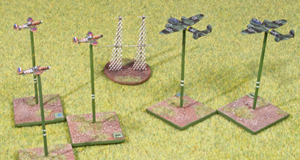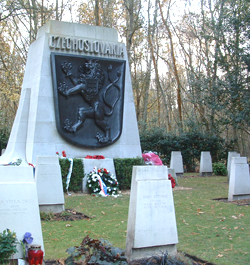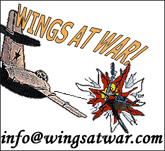The Battle of Britain 1940
![]()
"the Battle of France is over. I expect that the Battle of Britain is about to begin ...
Let us therefore brace ourselves to our duties, and so bear ourselves, that if the
British Empire and its Commonwealth last for a thousand years, men will still say,
'This was their finest hour'."
Winston Churchill on 18th June 1940
After the fall of France the only barrier to Germany's domination of Western Europe was Britain and the English Channel. Whether Hitler believed Goering's assertion that the Luftwaffe could eliminate the RAF and clear the way for the invasion fleet is open to question. More likely he expected Britain to sue for peace once their depleted and demoralised air force had suffered defeat.
What they did not realise was that the RAF had held back the majority of its most modern fighter, the Spitfire, from the Battle of France and that the 300 or so fighters lost had been replaced by July. RAF pilots were eager to prove their mettle, along with the many foreign pilots; Polish, Czech, Belgian, French, Irish, American and those from the Commonwealth and Dominions. Many had escaped their homelands when they were over-run and were burning for revenge. Nearly 150 Poles for example fought in the Battle of Britain. As the Luftwaffe was designed as a tactical support to the German Army's blitzkrieg, not as a strategic force, it was unable to sustain a long campaign.
By the mid 1930s the British Government had at last woken up to the danger posed by the new Nazi regime in Germany. An integrated centrally controlled air defence system was developed and fighters were organised into an autonomous command under Air Chief Marshall 'Stuffy' Dowding. Fighter Command was divided into four Groups each covering a part of Britain. Groups were sub-divided into Sectors. 11 Group for instance (responsible for covering the most vulnerable area, London and the south-east) had seven Sectors.
Enemy raids were tracked by the chain of towering radar antennae dotted along the coast, backed by ground based visual and sound observers. Group Operations Rooms had large situation tables showing the Group's area of responsibility. These were used to plot the movements of friendly and enemy aircraft, represented by markers showing strength and height, and to plan attacks on the incoming raids. Not unlike a large wargames table.
History's first uniquely aerial campaign was prosecuted as a series of phases in which tactics and strategies changed:
July To Mid August
Probing raids and attacks on Channel convoys and ports. Bf 109s operate independent of bombers to directly take on RAF fighters.
The Luftwaffe loses 140 aircraft to the RAF's 100 but more British fighters go down than German fighters. Convoys suspended due to the number of ships sunk.
|
Mid August Over 1,500 German bombers and nearly 1,000 fighters faced just over 600 RAF fighters, 90% of them Spitfires or Hurricanes. The Luftwaffe attack Britain's air defences including the first raids on radar stations and airfields. Strategic military targets such as aircraft factories are bombed. Heaviest loss in one day during the Battle of Britain occurs on the 18th August. RAF Fighter Command stretched to its limit. However, heavy losses lead to the Luftwaffe withdrawing the majority of its Ju 87 Stuka dive bombers and most Bf 110 heavy fighters from the battle. |
 |
| Do 17 attack on scratch-built radar station |
Late August
Goring cancels attacks on radar due to perceived ineffectiveness and his desire to take on the Spitfires and Hurricanes face-to-face. Heavy attacks on RAF airfields (two-thirds of raids target RAF bases).
RAF pilot availability becomes critical forcing many under-trained tyros into the air. Mounting loses begin to effect Luftwaffe morale.
Residential areas in London inadvertently hit on the night of 24/25 August, leading to RAF retaliation against Berlin.
September
In response to the bombing of Berlin Hitler orders revenge attacks and the Luftwaffe's main effort is transferred to London.
Most intensive day of air fighting on 15th September; 250 bombers escorted by more than 300 fighters raid London. The Bf 109s are force to fly close escort for the bombers. Nearly 300 RAF fighters inflict significant losses on the enemy.
On the 18th September the seaborne invasion of Britain is postponed.
October
First raids by the Italian Corpo Aereo.
Continuing bomber casualties force the Germans to resort to nuisance raids by fighter bombers.
The invasion of Britain is dropped.
 |
|
Memorial to Czech pilots at Brookwood Military Cemetery, Surrey |
Click on the links below for more information
